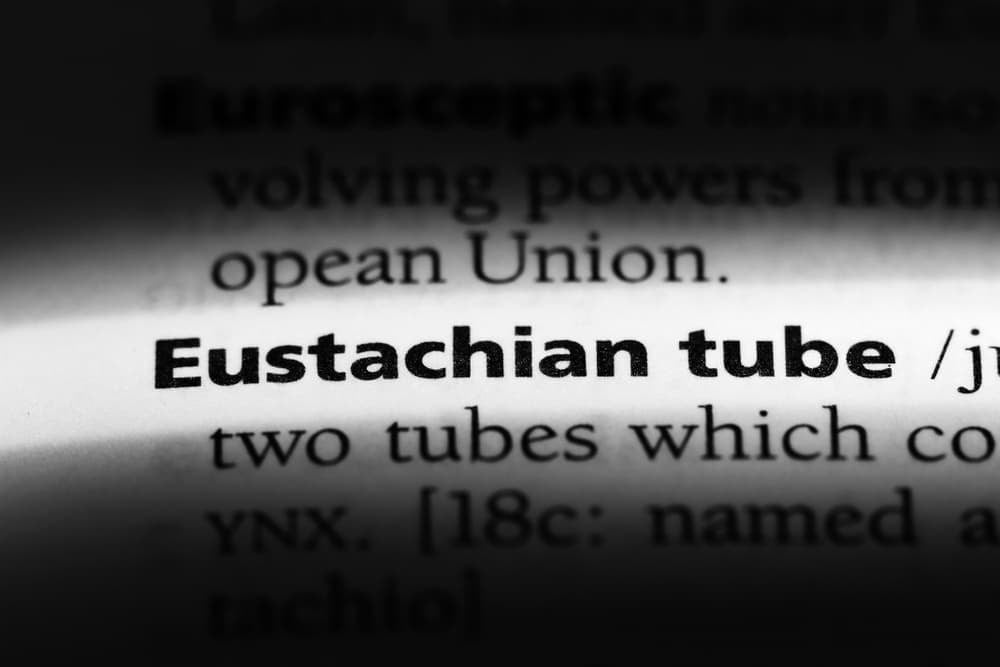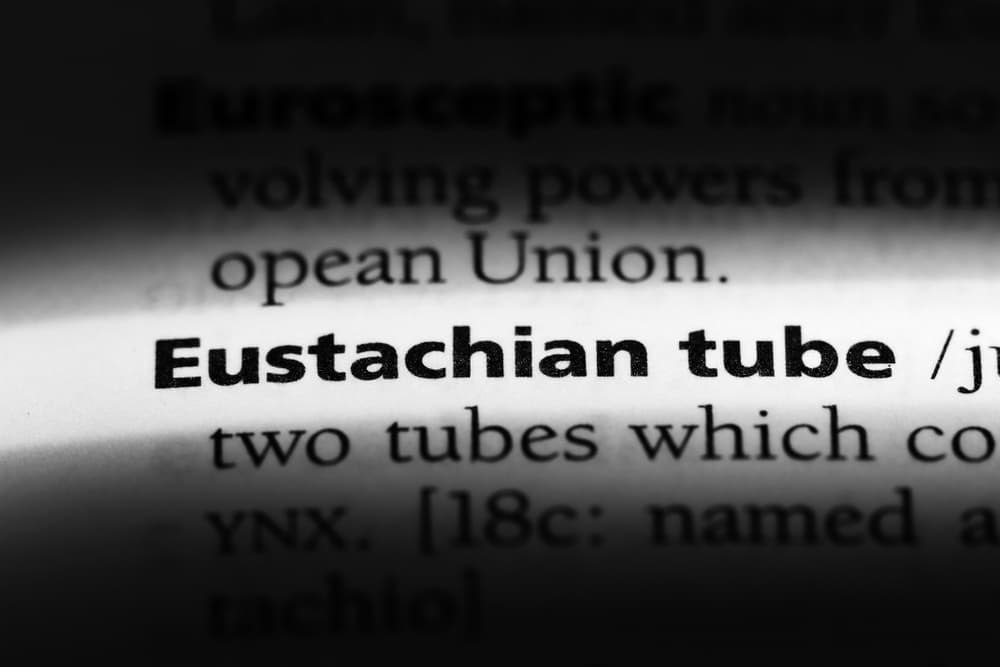Eustachian Tube Dysfunction: Symptoms, Causes, and Treatment Options
December 13th, 2022 | 5 min. read

The ear is made up of multiple sections including the outer, middle, and inner ear. There are small tubes and other different parts that allow adequate pressure levels, reduce fluid buildup, and other key factors to keeping the ears clean and functioning appropriately. A blockage within the ear or smaller tubes within the ear can lead to pain and discomfort, difficulty hearing, and a feeling of “fullness” within the ear.
What are eustachian tubes?
Eustachian tubes are small tubes, approximately 3 to 4 millimeters in adults, that connect the back of the throat to the middle ear. These tubes are responsible for equalizing pressure within the ear and helping to drain fluid to prevent infections. If the eustachian tubes become blocked, you are likely to experience a fullness within the ears. As the tubes work to equalize pressure within the ear it can feel like a popping, similar to that felt as you are changing altitude while flying or diving.
get your eustachian tube problems evaluated and treated today!
Don't wait to get your eustachian tube problems addressed. Schedule an appointment at any one of our 10 locations in the Houston, Texas, area near you today.
What is eustachian tube dysfunction?
Eustachian tube dysfunction is one of the most common reasons we see pediatric patients in our ENT clinics throughout Houston. They can cause impaired hearing, pain, and pressure within the ear canal. Eustachian tube dysfunction is often a temporary disorder that occurs during or after an illness like the common cold or flu. The blockage of these tubes does not require treatment, however, some children may need an operation to remove the blockage.
What are the signs and symptoms of eustachian tube dysfunction?
The eustachian tubes help to maintain a balance of pressure within the ears, which helps to maintain proper balance while walking or standing. Vertigo, or difficulty balancing, is a common sign of eustachian tube dysfunction. Other symptoms include:
- Muffled speech or sounds
- A “full” feeling in the ears
- Popping or clicking sensations, some children may express a “tickling” in the ear
- Tinnitus or ringing in the ears
- Pain or discomfort
Signs of eustachian tube dysfunction will worsen as the altitude changes during mountain climbing adventures, air travel, elevator rides, and diving. The altitude changes that affect the ears are known as barotrauma - an injury to the body due to barometric pressure changes.
What are the common causes of eustachian tube dysfunction?
Children and adults have different anatomy. The shorter tubes in children allow a more direct path for germs and less room for air to equalize. Eustachian tube dysfunction is often the result of swelling and inflammation as a result of infections or allergies.
Other common causes of eustachian tube dysfunction include:
Blockages
There are many things that can block an Eustachian tube. A blockage may be caused by enlarged adenoids, a buildup of earwax, or excess fluid - all conditions that will result in eustachian tube dysfunction. Though rare, a nasopharynx tumor or a tumor behind the eardrum can mimic eustachian tube dysfunction symptoms.
Glue ear
The middle ear begins filling with fluid that has a similar consistency to liquid glue. Glue ear is common in children and typically relieves on its own. The eustachian tube becomes congested, preventing air from flowing into the middle ear. This causes tightness around the eardrum, dulled hearing, and pain. When this condition does not relieve itself, an operation is necessary to drain the fluid.
Rhinitis or infection
Infections like the common cold or rhinitis (allergies) cause an overproduction of mucus, swelling, and inflammation around the Eustachian tubes. Persistent allergies can cause eustachian tube dysfunction symptoms to be present for several months if left untreated. It can feel like a constant earache or difficulty hearing.
Smoking
The eustachian tubes are lined with small hairs (cilia) responsible for moving mucus through the tubes from the ears to the throat. Smoking causes damage to the cilia, leaving them unable to function properly. It can also cause inflammation of the adenoids causing a physical obstruction. For those who smoke frequently, eustachian tube dysfunction is often persistent with symptoms lasting until smoking has ceased.
Long-term eustachian tube dysfunction may result in symptoms for several months. It is not known why some experience long-term symptoms while others do not. Common causes of chronic eustachian tube dysfunction include chronic sinusitis, smoking, and persistent rhinitis.
What are the treatment options for eustachian tube dysfunction?
For people with persistent eustachian tube dysfunction symptoms, your doctor will perform a physical examination of the ear canal, throat, and nasal passages. If your doctor is concerned about recurrent ear infections in children or other disorders involving various parts of the ear, you will be referred to an ear, nose, and throat specialist. It is common for cases of Eustachian tube dysfunction to resolve themselves, but some may need medical treatment.
Before the doctor can implement a treatment plan for eustachian tube dysfunction, he must get to the root cause of the symptoms. For those suffering a cold or chronic sinusitis, decongestant medications, antihistamines, or steroid nasal sprays to relieve swelling and inflammation and reduce allergy symptoms.
Home remedies to relieve a buildup of pressure
- Take a deep breath, pinch your nostrils, and blow with your mouth closed. This home remedy, known as the Valsalva maneuver, will help to relieve the pressure built up within the ears.
- For babies, parents can alleviate pressure during altitude changes by giving their child a pacifier or a bottle. The sucking motion will help to equalize pressure in the ears.
- Special exercises like repetitive yawning, swallowing, and chewing gum can help to relieve pressure.
Surgery to treat eustachian tube dysfunction
- Ear tubes to equalize pressure may be placed into the eardrums through a small incision. The tubes allow air to properly ventilate the middle ear for up to one year. Once ear tubes have been placed, your surgeon will recommend wearing ear plugs while swimming in lakes, oceans, and other water-involved activities.
- Eustachian tuboplasty, or balloon dilation, is a modern procedure designed to expand the eustachian tube with endoscopic equipment. Small tools are inserted through the nasal passage to the eustachian tube where the balloon will be inflated for two minutes to expand the tube. Upon completion, the tube is deflated and the tools are removed.
- Myringotomy is a surgical procedure in which a surgeon makes a small incision in the eardrum to drain fluid that has built up in the middle ear. Once the swelling has resolved and the eardrum is no longer impacted, the incision will begin healing.
Treating Eustachian Tube Dysfunction at Houston Ear, Nose, Throat, and Allergy
At Houston Ear, Nose, Throat, and Allergy, we have been treating patients of all ages with the most advanced technology, tools, and equipment. Our team is staffed with board-certified otolaryngologists, allergists, sleep medicine specialists, facial plastic and reconstructive surgeons, and licensed audiologists in our 10 locations.
We offer many services including:
- Ear, nose, and throat services to diagnose, treat, and prevent disorders involving these areas
- Facial plastic surgery
- Voice and swallowing services
- Allergy services
- Vivaer nasal airway remodeling
- Balloon sinuplasty
- Hearing services
- Cochlear implants
Our experts specialize in treating ear and balance disorders, allergies and sinus conditions, hearing impairment, sleep apnea, snoring, and conditions involving the throat, including tonsils, adenoids, and eustachian tubes.
Established in 1907, the priority at Houston ENT and Allergy has been patient care and satisfaction. What was once a one-man operation quickly blossomed into one of the world’s largest practices in the industry, with 10 locations in greater Houston and surrounding areas.
Our philosophy is to treat each patient as if they are the only patient we are seeing that day. Each patient receives undivided attention and treatment with modern technology. From birth to seniors, Houston ENT offers 24-hour scheduling with same-day appointments for many of our services.
Providing a swift and accurate diagnosis to treat conditions involving the ears, nose, and throat of a person is important. Equally as important, our company works to provide patient education to reduce the risk of infection or injury.
Schedule your Houston ENT & Allergy appointment here or call our scheduling center at 281-649-7000.
Topics:

